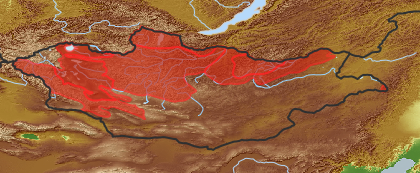| Class: | ferns |
| Order: | Polypodiales |
| Family: | Aspidiaceae |
| Genus: | Dryopteris |
| Scientific name: | Dryopteris fragrans (L.) Schott |
| Name acc. to: | Gubanov 1996 |
| Herbar: | list records   |
| open map in a new window |  |
| Habitat: | Rock fissures, stony places, among boulders in forest belt (Grubov 2001). |
| Flower (i)reproductive portion of the plant, consisting of sepals, petals, stamens, and pistils | |
| Ovary position: (i)For entirely or partly fused carpels, describe their position in relation to the insertion point of perianth leaves (best done by doing a longitudinal section of a flower). | absent (i)Without ovary: male flowers  inherited by order Polypodiales: absent inherited by order Polypodiales: absent
|
| Root / shoot below ground (i)plant part below ground (in most cases), including below ground shoots, without leaves | |
| Root type: (i)Organisation of the roots. | homorhizous (i)Many equal roots
example: Monocotyledonae  inherited by vasc. plants: homorhizous inherited by vasc. plants: homorhizous
|
| Distribution (i)region where the plant is likely to be found | |
| Distribution (Veg. Zones): (i)acc. to Grubov 1952 | Khubsgul (i)In distribution data often named as '1' 
Khentei (i)In distribution data often named as '2' 
Khangai (i)In distribution data often named as '3' 
Mongol-Daurian (i)In distribution data often named as '4' 
Great Khingan (i)In distribution data often named as '5' 
Mongolian Altai (i)In distribution data often named as '7' 
Depression of Great Lakes (i)In distribution data often named as '10' 
acc. to: Gubanov 1996, Ebel & Rudaya 2002 |
| Distribution Khangay: (i)acc. Flora Khangaya 1989 | I
III
IV
V
|